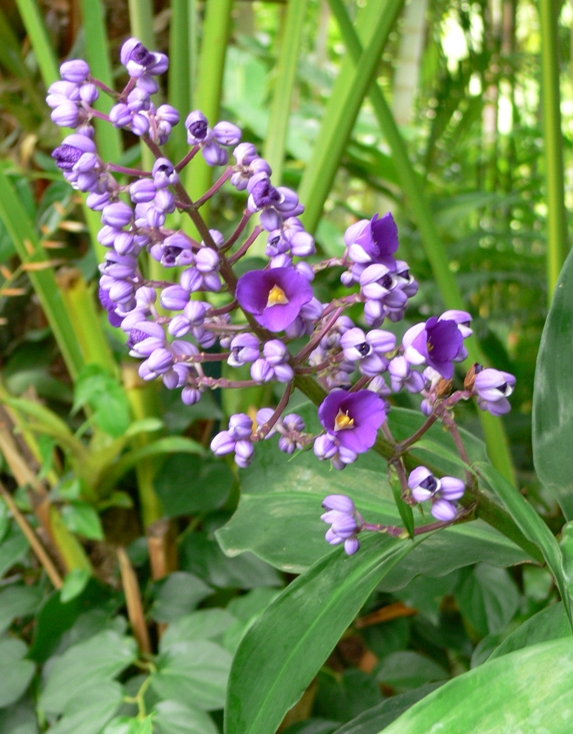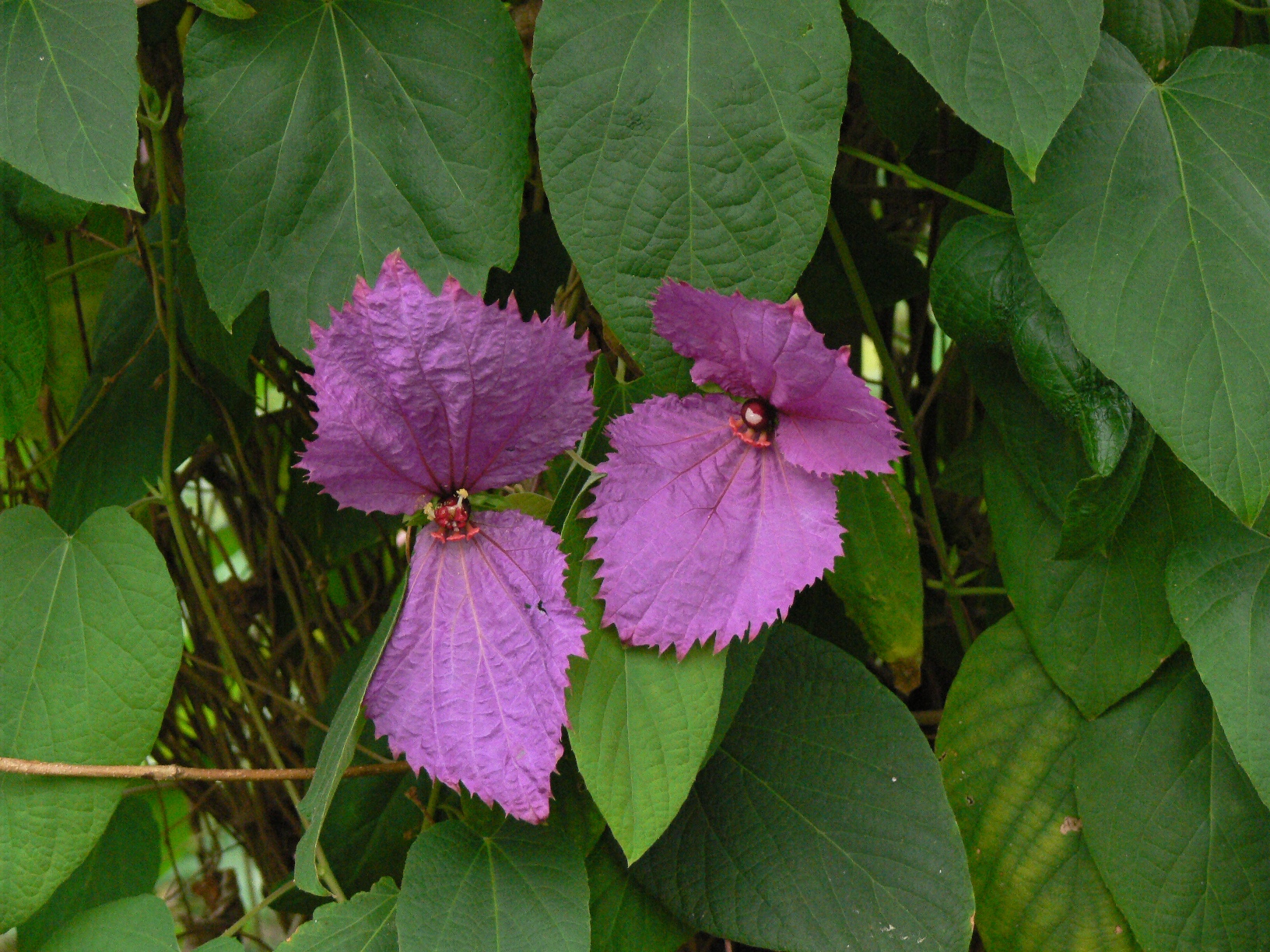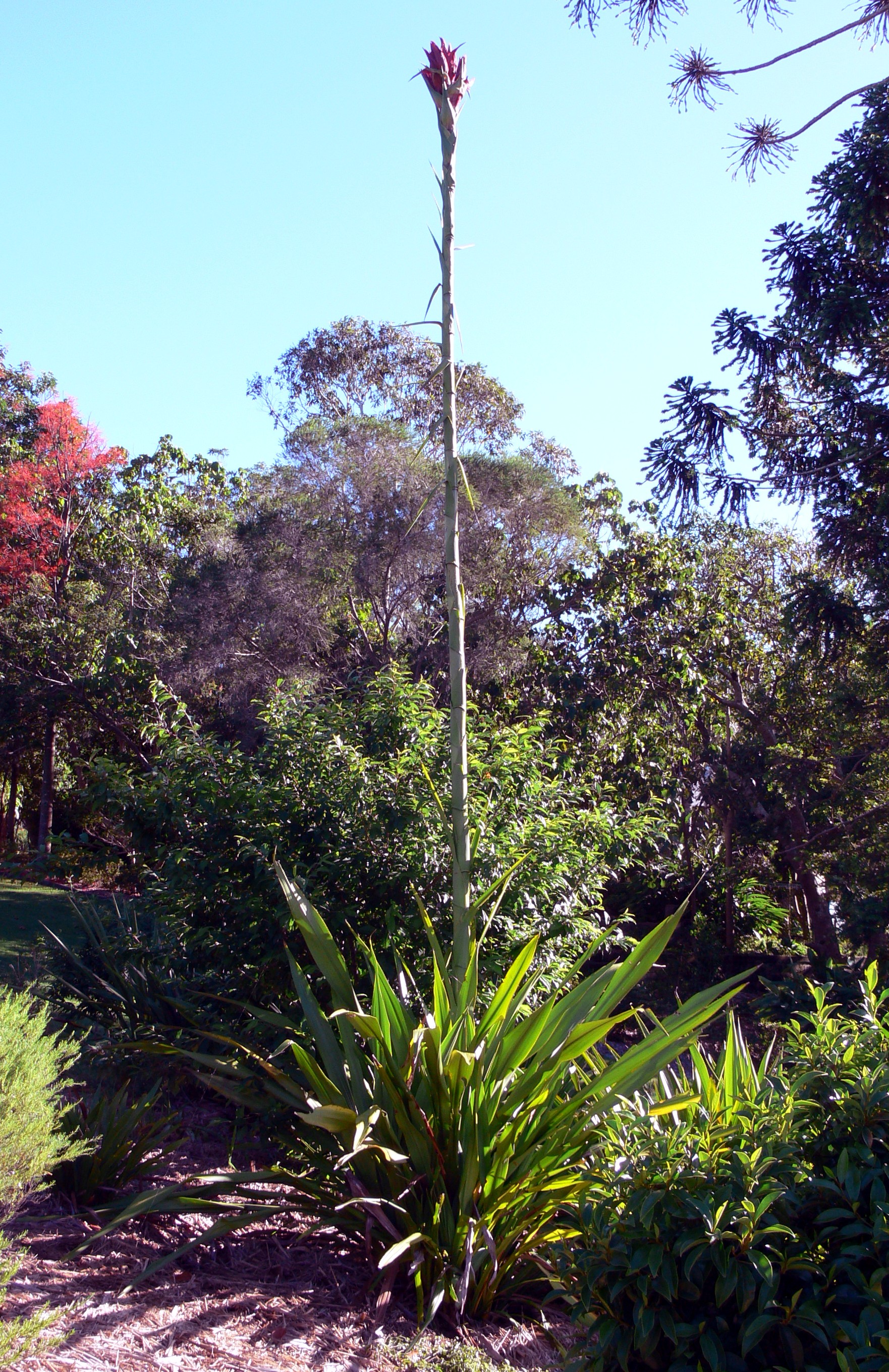Plant Directory
Blue Ginger (Dichorisandra)
Just disappearing from our gardens at the moment is the electric blue of the Blue Ginger flower. To me this heralds the arrival of winter and the need to have the fireplace ready.
Despite its name, this plant is not actually a ginger. Its botanical name is Dichorisandra thyrsifolia and being a member of the Commelinaceae or Spider Wort family, it is more closely related to Wandering Jew than any of the true gingers. Nonetheless, it slips perfectly into any tropical back drop.
Originating from tropical America, there are more than 25 species of Dichorisandra, all of which love rich, wet soils and high summer humidity. They are herbaceous perennials with soft, succulent stems. Their root system develops into a soft rhizome after the first year allowing them to recede to dormancy if they become too dry.
The Blue Ginger is the best known and most widely cultivated Dichorisandra. It is another one from Grandma’s collection, yet it has never gone out of fashion. Its flowers, through summer and autumn, never fail to stun.
It grows up to 2.4 metres tall but will need support from surrounding plants to keep upright. If the plant is cut back in winter or is forced into dormancy and looses its stems, the new season’s growth will be single stems with a large terminal flowering panicle. Stems which survive over winter produce side branches with many smaller flower heads.
While they prefer dappled shade to achieve the best colour and most luscious habit, they can grow in high light conditions provided they have adequate water supply, a compost rich soil and protection from the afternoon sun. The plant will be short with yellow leaves. On the other hand, I have seen it growing in full summer shade under a pecan tree. This specimen was tall with stems about 40mm thick.
Damp and well drained parts of your garden are ideal for Blue Ginger. Abundant leaf litter, compost or soft mulch can provide adequate nutrients for a healthy plant, though they will not complain about a regular application of an organic fertilizer. Pick your spot in the garden well and you should not need to water them.
These plants also make good pot specimens. Protection from direct sun and daily watering is essential to keep them healthy and looking good. Once the plant settles down for the winter, the pot can be popped behind the shed or in a protected spot in the garden until spring returns with the promise of new blue blooms.
Blue Ginger is not tolerant of frosts. In frost prone areas, grow the plant in a protected part of your garden. Mealy bugs are their main pest problem. Check the root system before planting, discarding any infested plants.
Propagation is by stem cutting or root division in spring and summer. Select healthy stems, cut into lengths of 1 or 2 nodes and allow drying for about 12 hours before striking. Avoid skin and eye contact with the sap. Blue Ginger strikes readily without rooting hormone provided it is kept wet in the pot.
My first experience of this beautiful plant was with a squalid specimen perch at the top of a concrete wall in full sun. Its leaves were yellow and it was barely 40 cm tall. Yet I was impressed enough to seek out one for myself. Try one in your garden next spring and you too will experience the reward of this blue jewel.




